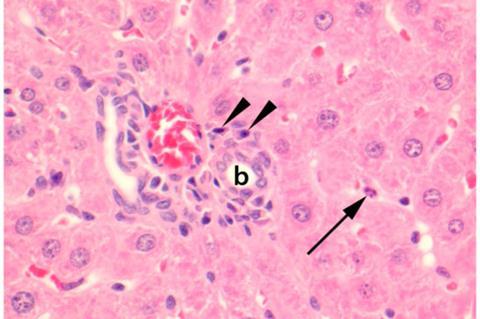Doctors and scientists from the University Hospitals Leipzig (UKL) and Mannheim (UMM), and the German Center for Infection Research (DZIF) at the Friedrich-Loeffler-Institut (FLI) and the Bernhard Nocht Institute for Tropical Medicine (BNITM), have reported a case of Seoul virus infection in a woman.

The Seoul virus belongs to the hantavirus family and can be transmitted by rats. This infection is linked to a private animal breeding facility and highlights the growing threat to public health posed by the increasing popularity of rats as pets.
READ MORE: From Miami to Berlin: stowaway rat delivers valuable pathogen lessons
READ MORE: Hantavirus in Madagascar linked to black rats in agricultural areas
In their publication of the case in the journal Emerging Infectious Diseases, the experts recommend better screening and improved hygiene practices in private rat breeding facilities. They also advocate for raising public awareness of zoonoses, which are diseases that can be transmitted from animals to humans.
Case details
In March 2024, a 44-year-old woman from central Germany was admitted to the hospital with a fever, extreme fatigue, diarrhea, and acute kidney failure. She required temporary dialysis, but she eventually made a full recovery. Laboratory tests revealed that she had been infected with the Seoul virus, which she most likely acquired during a visit to a private pet rat breeding facility several weeks before her symptoms began.
A joint investigation by local health authorities, the FLI, and the BNITM revealed that the virus was present in several rats from the breeding facility. Genetic analyses showed a high degree of similarity between the virus sequences from the facility and those from the patient.
Although the Seoul virus is found worldwide, human infections in Germany have been reported extremely rare thus far. The virus spreads mainly through inhaling tiny particles contaminated with infectious rat urine, feces, or saliva. Human-to-human transmission has not been reported.
Pet rats carry pathogens
“Many people are unaware that pet rats can carry pathogens that cause serious diseases,” says Prof. Rainer Ulrich, a DZIF scientist at the FLI and one of the study’s authors. “Responsible ownership and breeding, good animal hygiene, and public education—especially among pet rat owners—are crucial to preventing further infections in the future.”
“The attention of the treating physicians and the close cooperation between health and veterinary authorities played a major role in clarifying this case of illness,” adds Dr. Mario Hönemann from the Institute of Medical Microbiology, Virology, and Infection Epidemiology at the UKL.
The researchers are calling for increased monitoring of rat breeding and husbandry, improved hygiene in breeding facilities, and public education about the health risks associated with keeping rats as pets. Immunocompromised individuals and other vulnerable groups should avoid keeping rats as pets.
Fabian Baalmann and Johannes Münch from the Clinic and Polyclinic for Endocrinology, Nephrology, and Rheumatology at the UKL, who cared for the patient directly at her bedside, add, “We also recommend asking patients with unexplained fever, kidney involvement, or bleeding symptoms specifically about contact with rodents, including pet rats.”
One Health approach
This case highlights the need for a unified “One Health” approach to infectious diseases transmitted between animals and humans, which takes a holistic view of human, animal, and ecosystem health.
“The strength of ‘One Health’ lies in cooperation. We work on an equal footing, respect each other’s expertise, and make decisions together. This transforms individual disciplines into reliable teams that protect patients and the population,” summarizes Corinna Pietsch, Head of Clinical Virology at the UKL.
Topics
- Bernhard Nocht Institute for Tropical Medicine
- Corinna Pietsch
- Emerging Threats & Epidemiology
- Fabian Baalmann
- German Center for Infection Research
- hantaviruses
- Infectious Disease
- Johannes Münch
- Mario Hönemann
- One Health
- pet rats
- Public Health
- Rainer Ulrich
- Research News
- Seoul virus
- UK & Rest of Europe
- University Hospital Leipzig
- University Hospital Mannheim
- Veterinary Medicine & Zoonoses
- Viruses







No comments yet